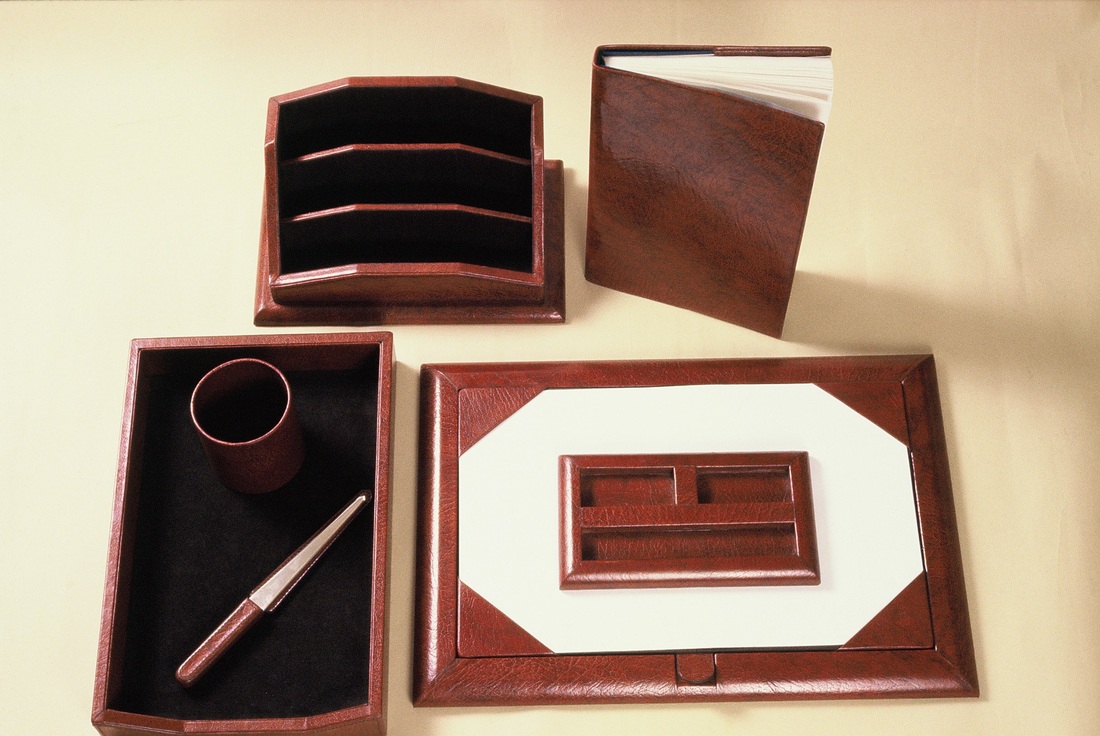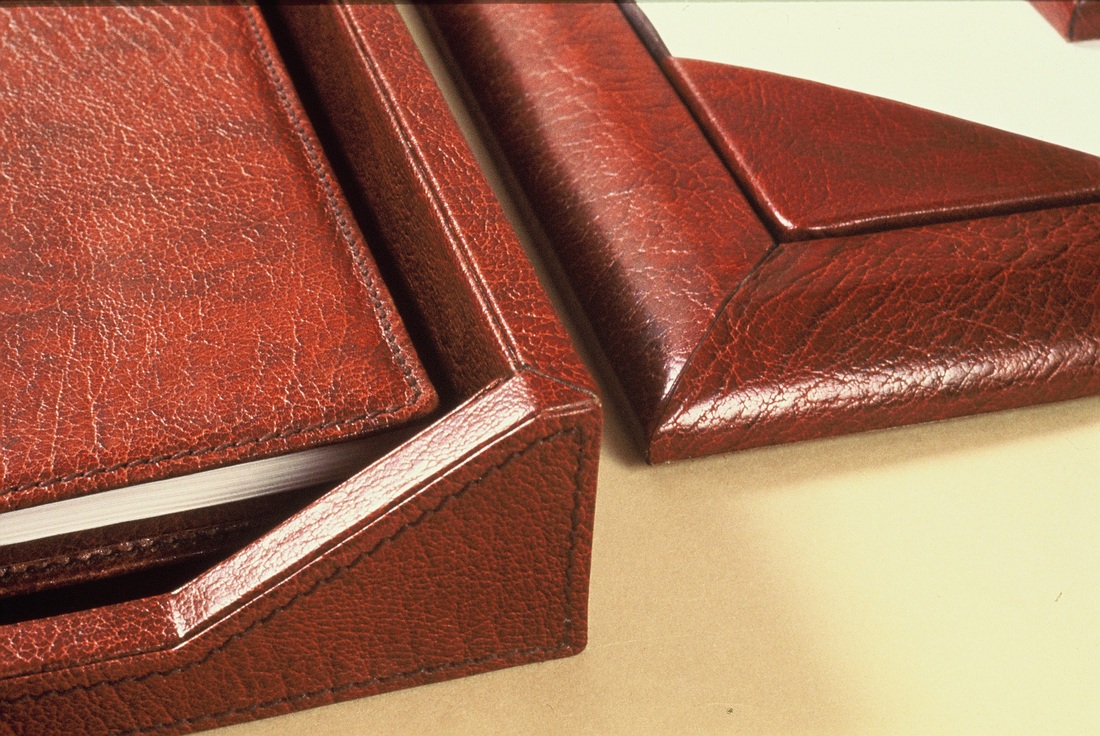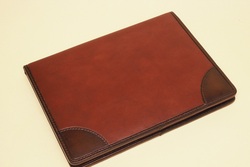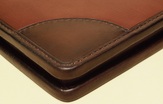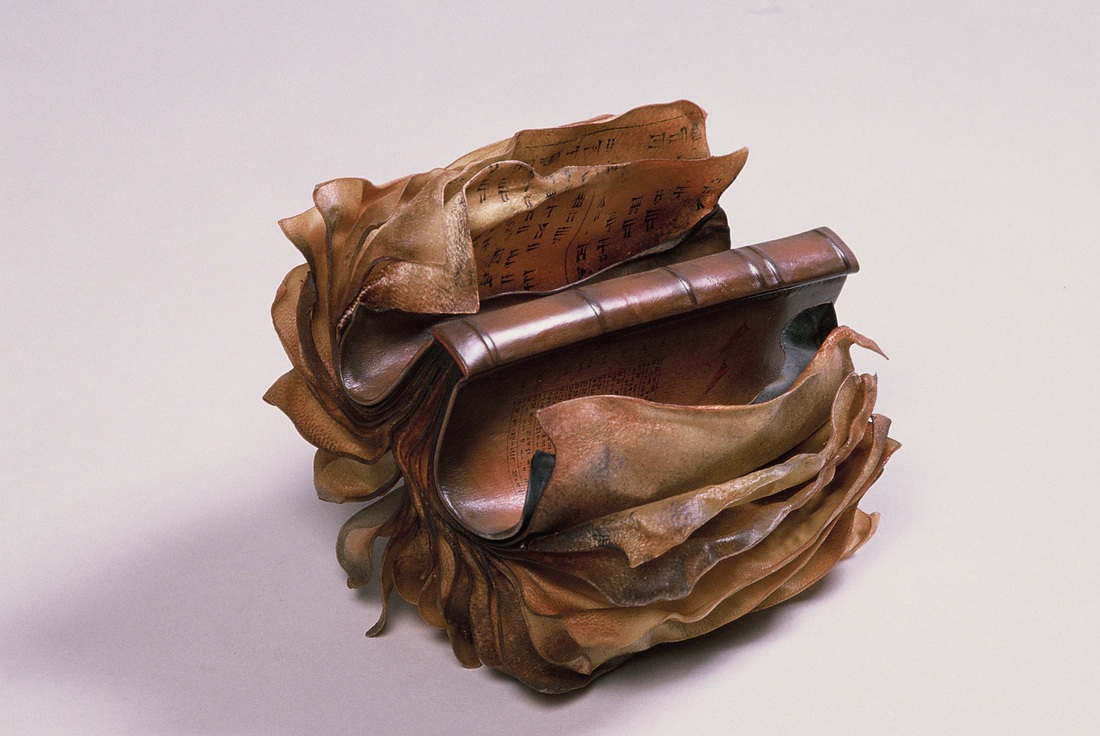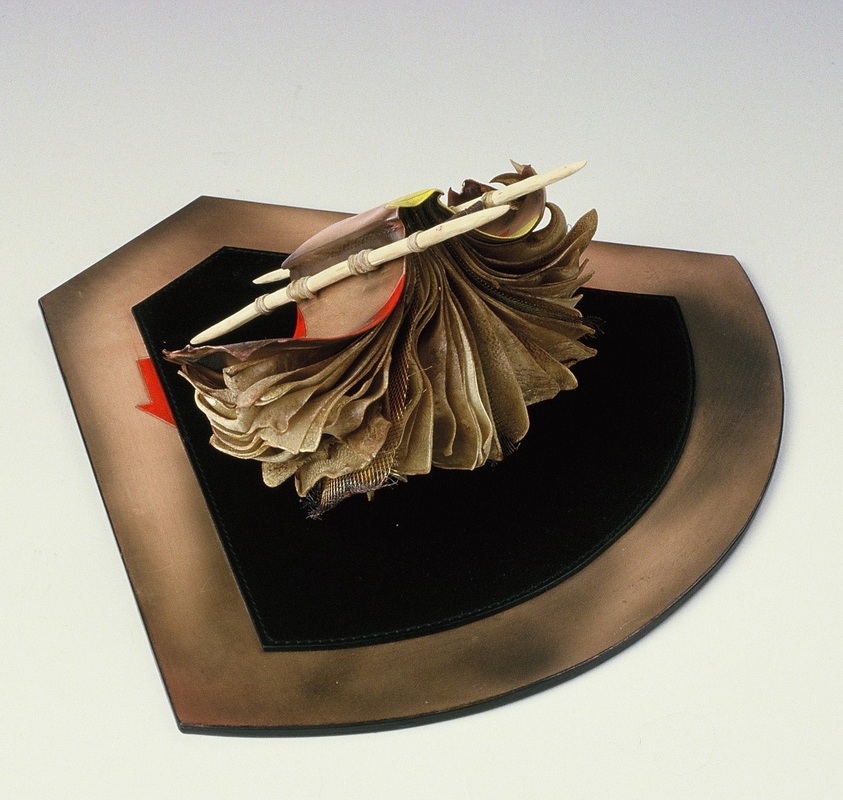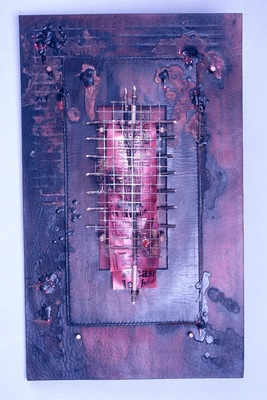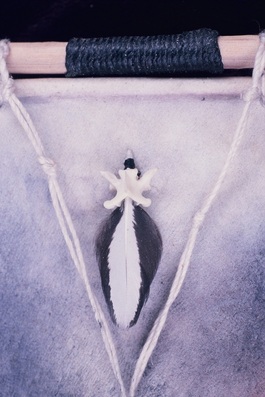This is just a few examples of other stuff. Pics that don't belong in any of the other categories.
As trainer and teacher, my job was to raise standards and instruct in the fine art of historical leather design and making. One of the projects that I insisted trainees undertake was to construct this desk accessory set. Detail at right.
Almost three decades down the track, I don't feel like justifying or explaining too much what these are. I invited a master book-binder into the studio to teach my crew a little about bookbinding. While they bound books, I bound rawhide leaves and applied heat to see what they'd do. What are they? Who cares? If you have to ask, I don't want to explain. But I thought they were cool.
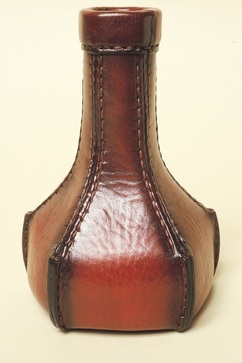
Your guess is as good as mine - but I think this was just a practice piece during the stage when I was teaching myself how to butt-sew.
This is a truly masochistic practice.
In order to join two pieces of thick leather together side-by-side - butted up against each other - you have to cut a furrow close to the edge of each piece. You then make sewing holes with a saddle stitching awl that go through from the bottom of the cut furrow to exactly the middle of the edge of the leather. In other words, parallel to the surface of the leather. Of course, these holes have to be spaced in such an exact way as when you put the pieces together to hand sew, they match up. Added to that, you must be very exact about where the holes protrude in the edge so that when they're sewn, the panels sit together.
This process is almost always done (or even ABLE to be done) if the outer leather panels have a well-integrated lining (like kangaroo leather, for instance) securely glued to the back. This provides structural integrity to the prime leather panel.
So, when all that is prepared, you sew through while the two pieces are flat together, creating a seam that lies flat.
This little number wasn't exactly one of those ... I mean the butt-stitching was designed to finish at a little more of an angle, but almost all the bowls and boxes you see in other places here are 'flat' butt-sewn.
Anyway, as much as this was only a practice piece, I liked it in the end.
9cm X 16cm.
This is a truly masochistic practice.
In order to join two pieces of thick leather together side-by-side - butted up against each other - you have to cut a furrow close to the edge of each piece. You then make sewing holes with a saddle stitching awl that go through from the bottom of the cut furrow to exactly the middle of the edge of the leather. In other words, parallel to the surface of the leather. Of course, these holes have to be spaced in such an exact way as when you put the pieces together to hand sew, they match up. Added to that, you must be very exact about where the holes protrude in the edge so that when they're sewn, the panels sit together.
This process is almost always done (or even ABLE to be done) if the outer leather panels have a well-integrated lining (like kangaroo leather, for instance) securely glued to the back. This provides structural integrity to the prime leather panel.
So, when all that is prepared, you sew through while the two pieces are flat together, creating a seam that lies flat.
This little number wasn't exactly one of those ... I mean the butt-stitching was designed to finish at a little more of an angle, but almost all the bowls and boxes you see in other places here are 'flat' butt-sewn.
Anyway, as much as this was only a practice piece, I liked it in the end.
9cm X 16cm.
